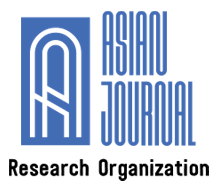Abstract
Occupational Safety and Health (OSH) implementation in higher education institutions (HEIs) is essential in ensuring a safe and conducive learning environment for students, faculty, and staff. This study examines the extent of OSH implementation in private HEIs in San Carlos City, Philippines, based on the perceptions of employees, students, safety officers, and administrators. Using a descriptive research design, the study evaluates key OSH components, including workplace safety measures, program compliance, availability of support facilities, and assessment of the work environment. Findings suggest that OSH implementation is moderately effective, with administrators rating compliance and assessment measures higher than students and employees. Challenges such as funding limitations, outdated infrastructure, inconsistent enforcement of safety protocols, and a lack of comprehensive safety training were identified as barriers to effective OSH governance. The study highlights the need for strengthened institutional policies, increased investment in safety resources, and enhanced stakeholder engagement to foster a culture of safety. Addressing these concerns through a more structured and proactive approach to OSH management will ensure the long-term sustainability of safety initiatives in private HEIs.

This work is licensed under a Creative Commons Attribution 4.0 International License.
Copyright (c) 2024 And Julie D. Rosal, Jebra Maris B. Sañoza
